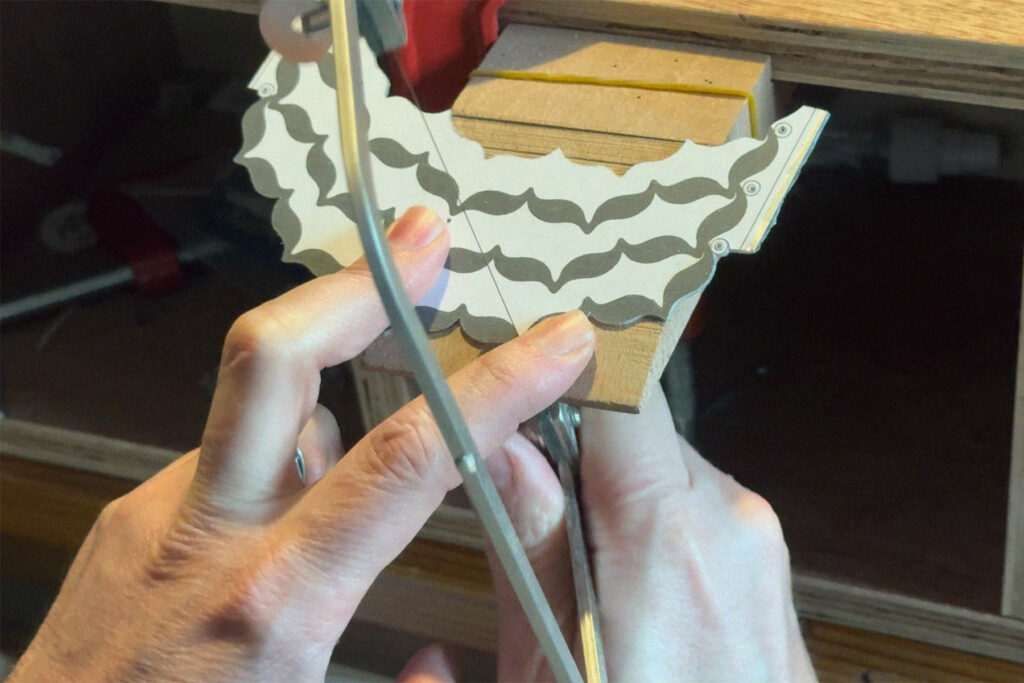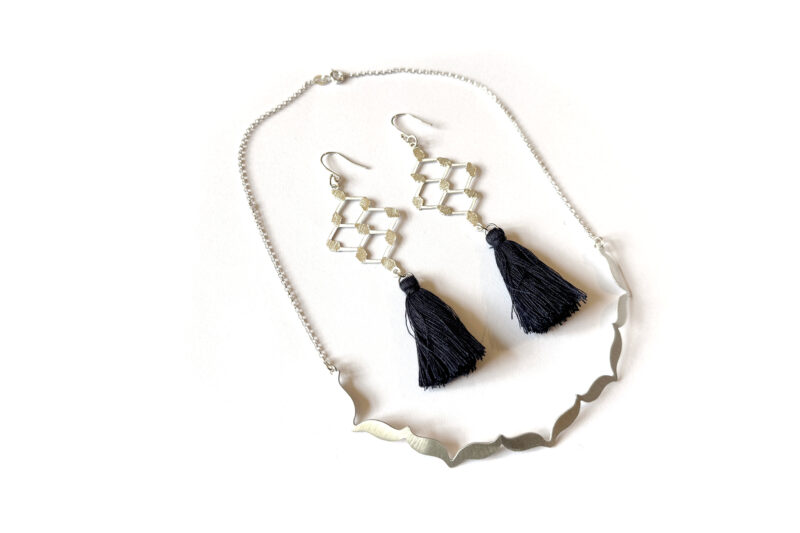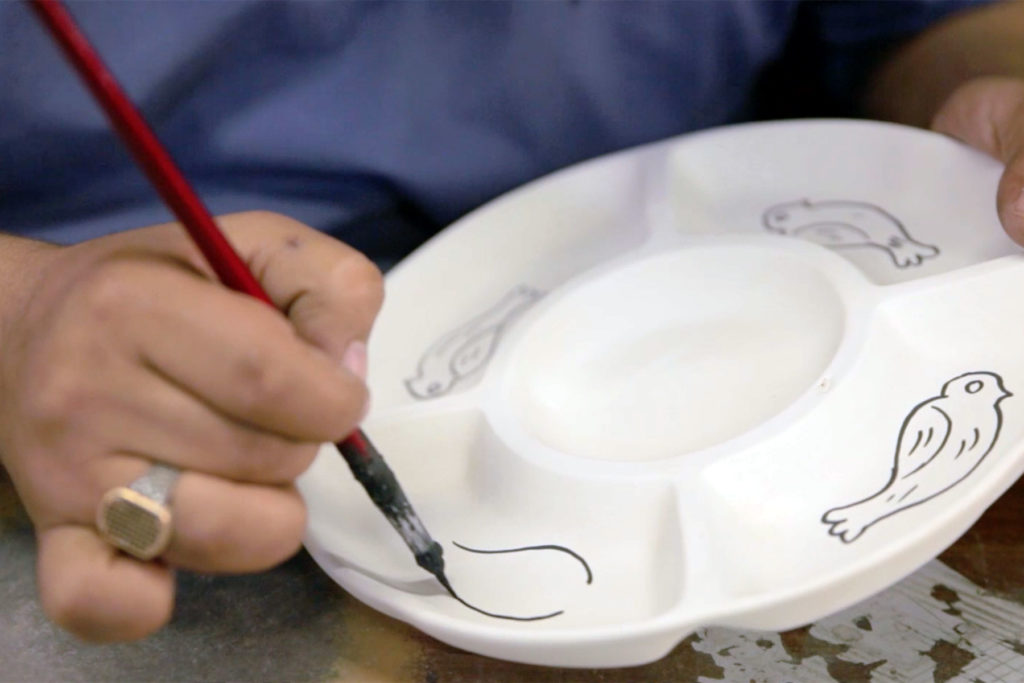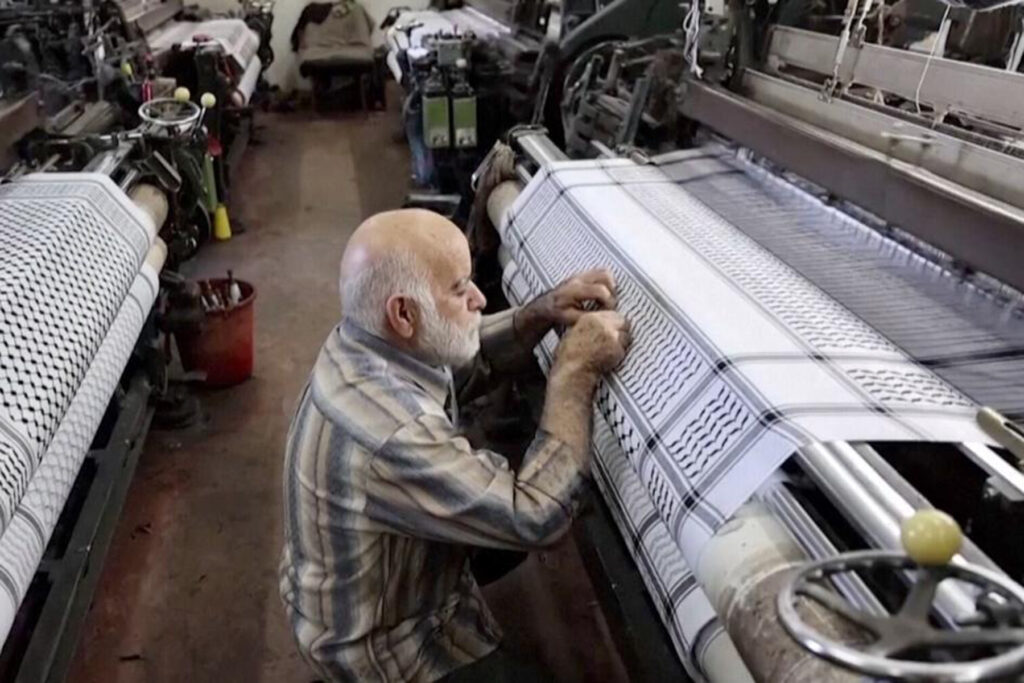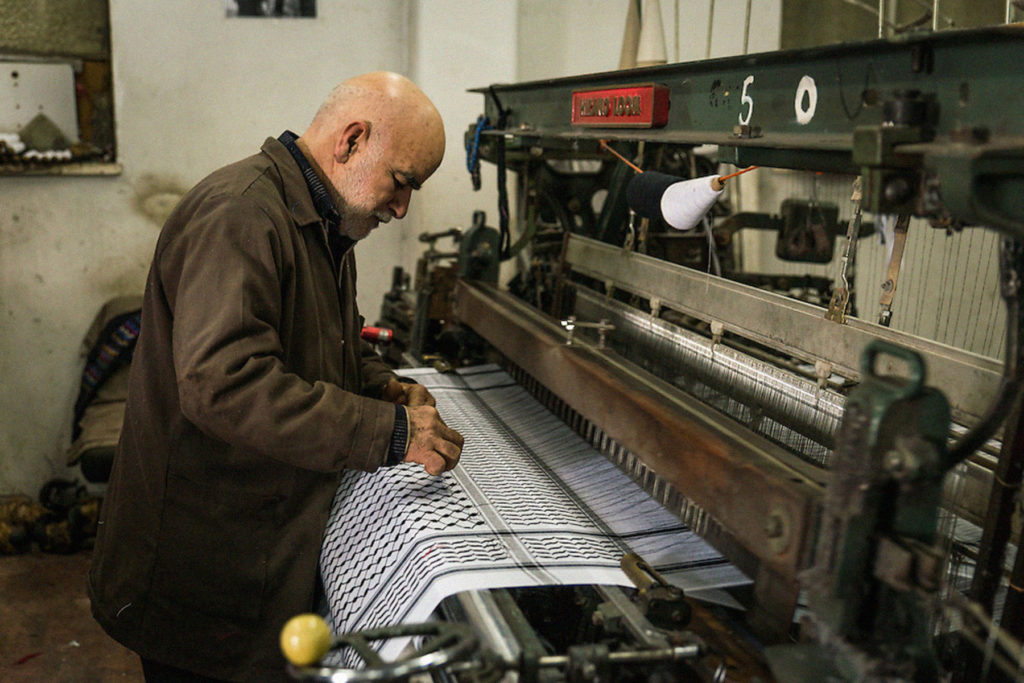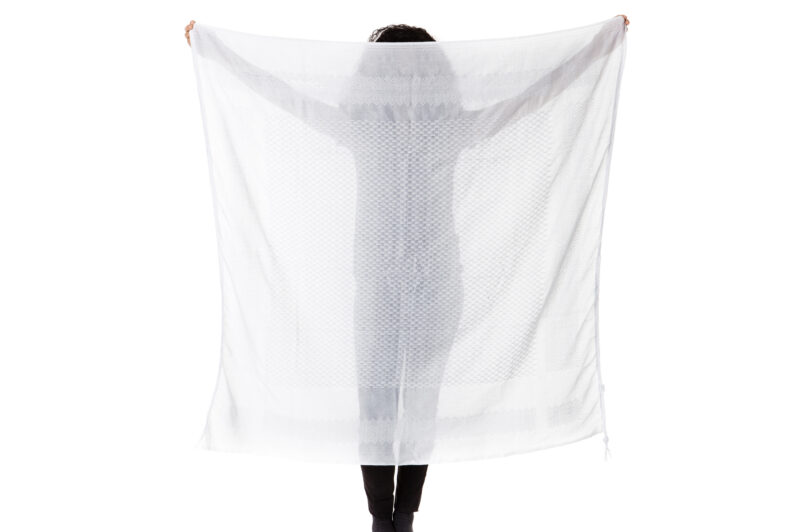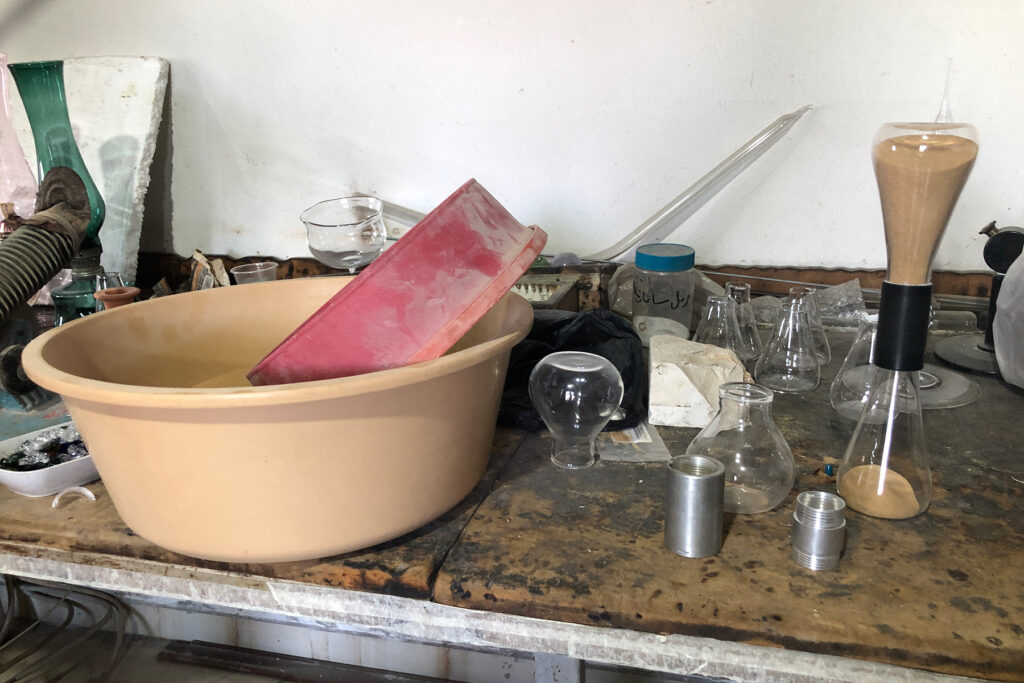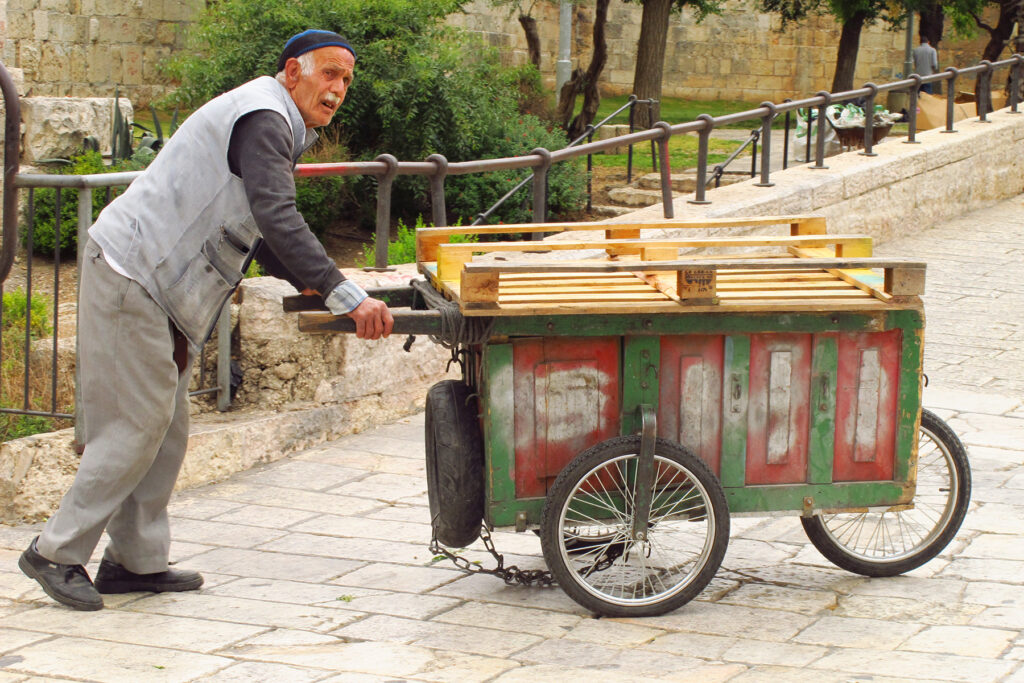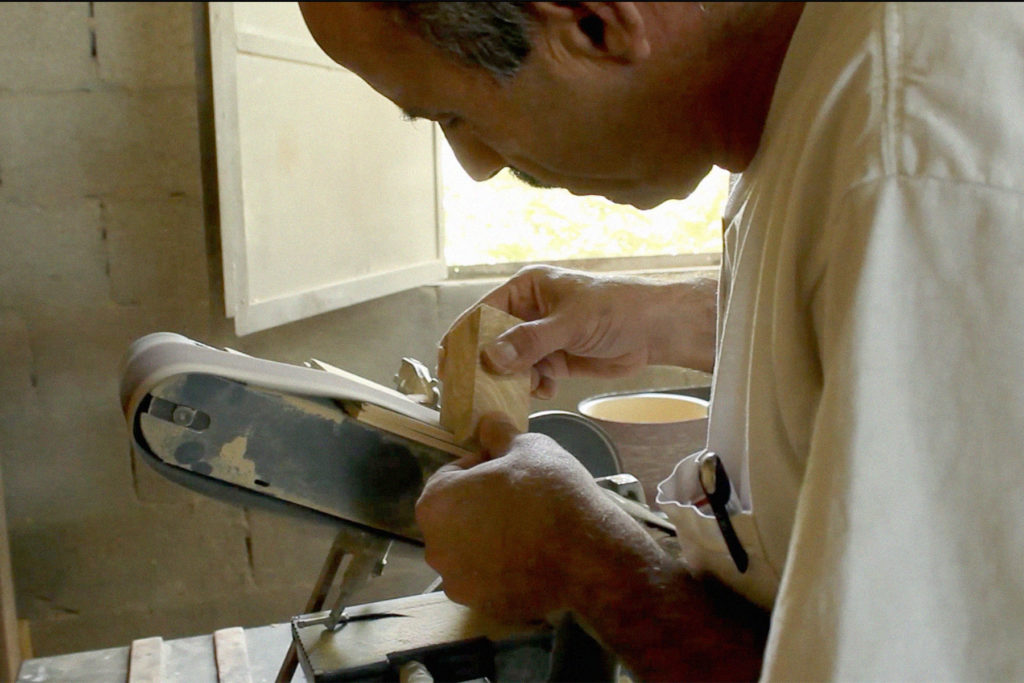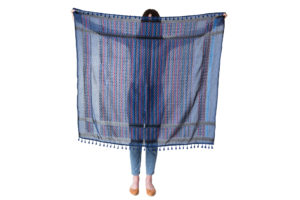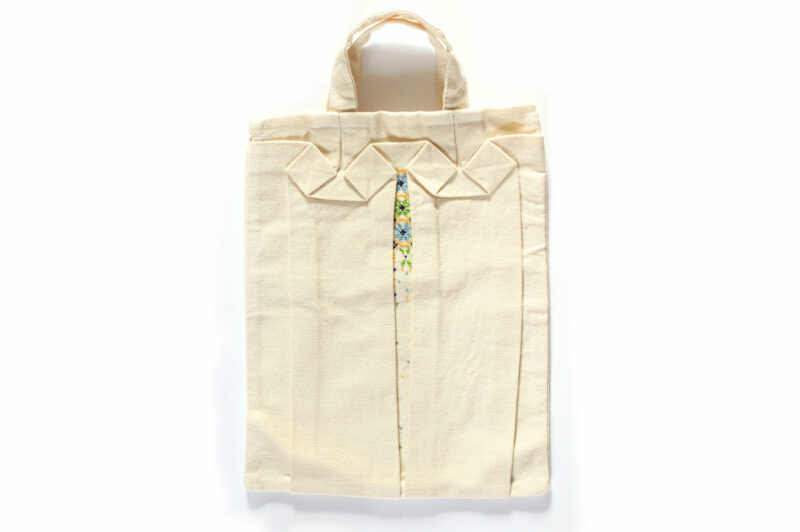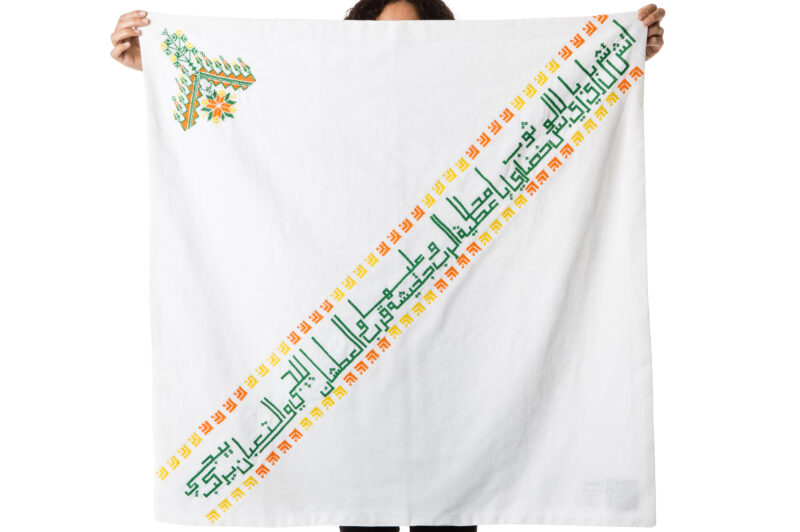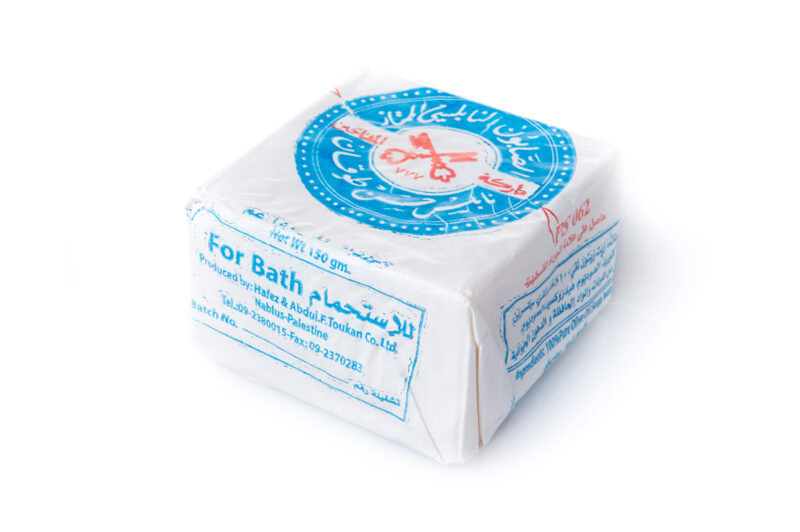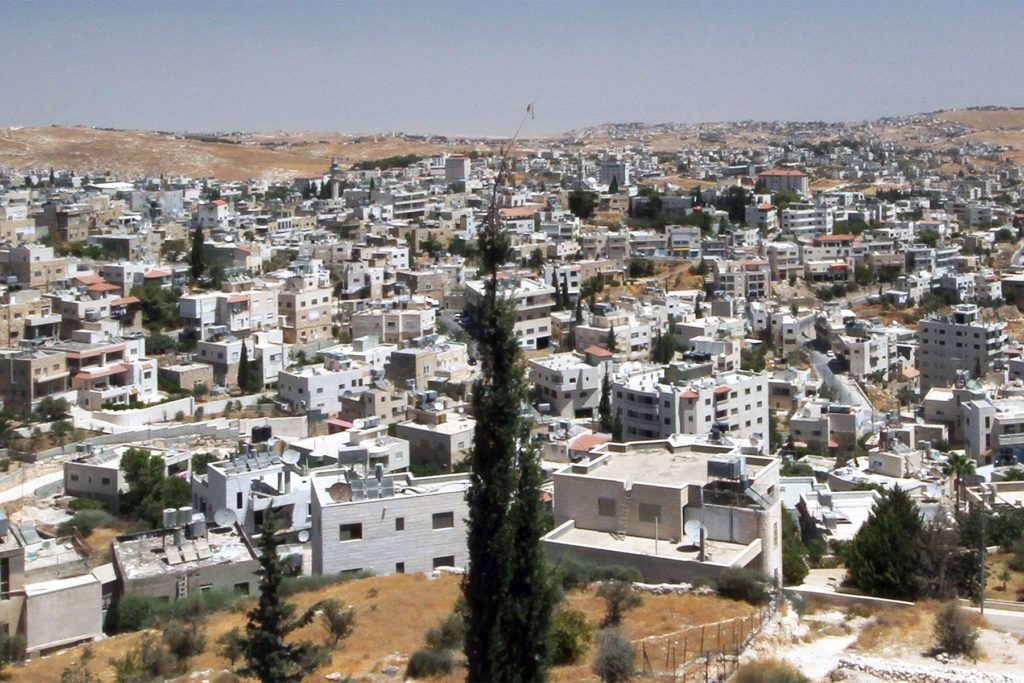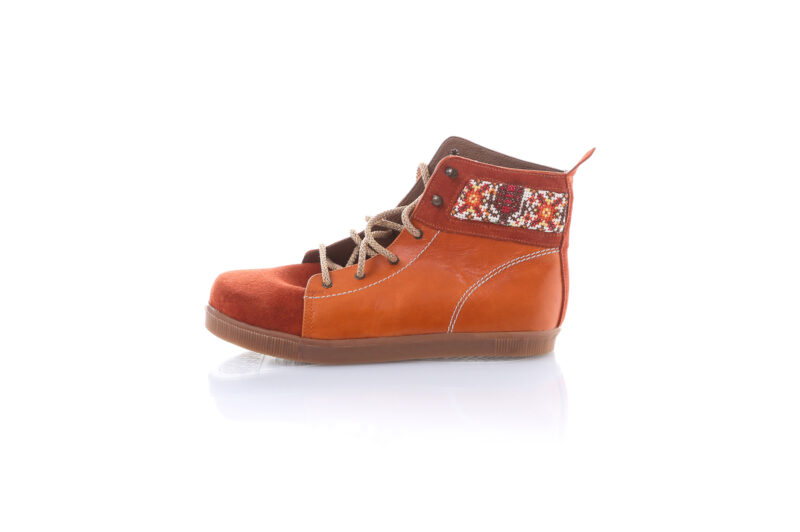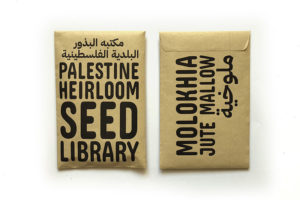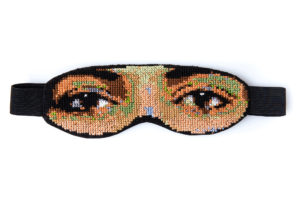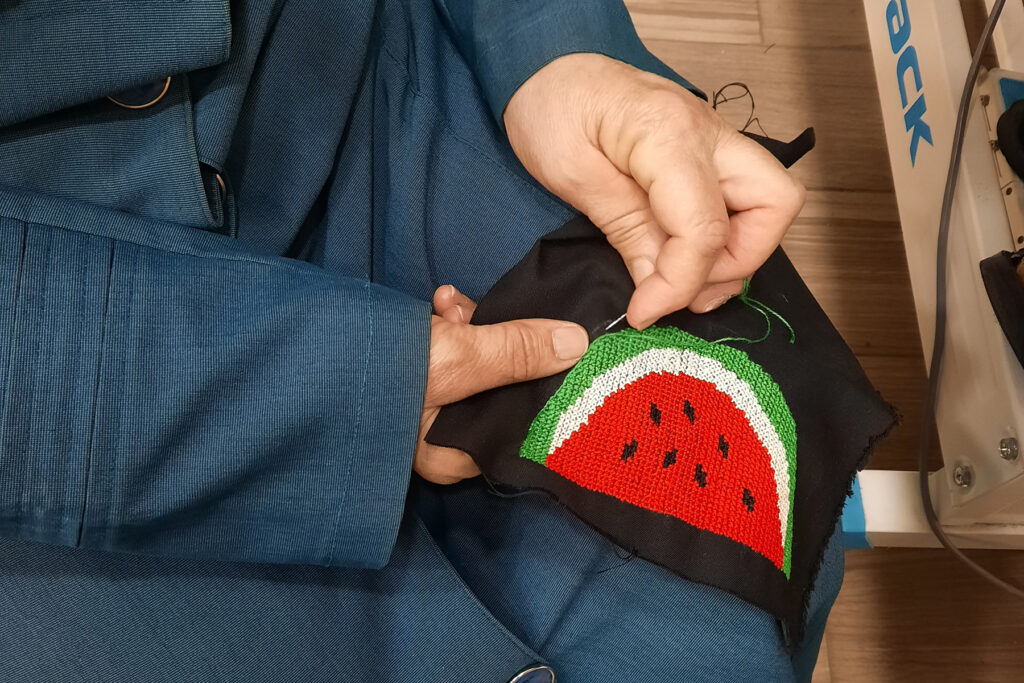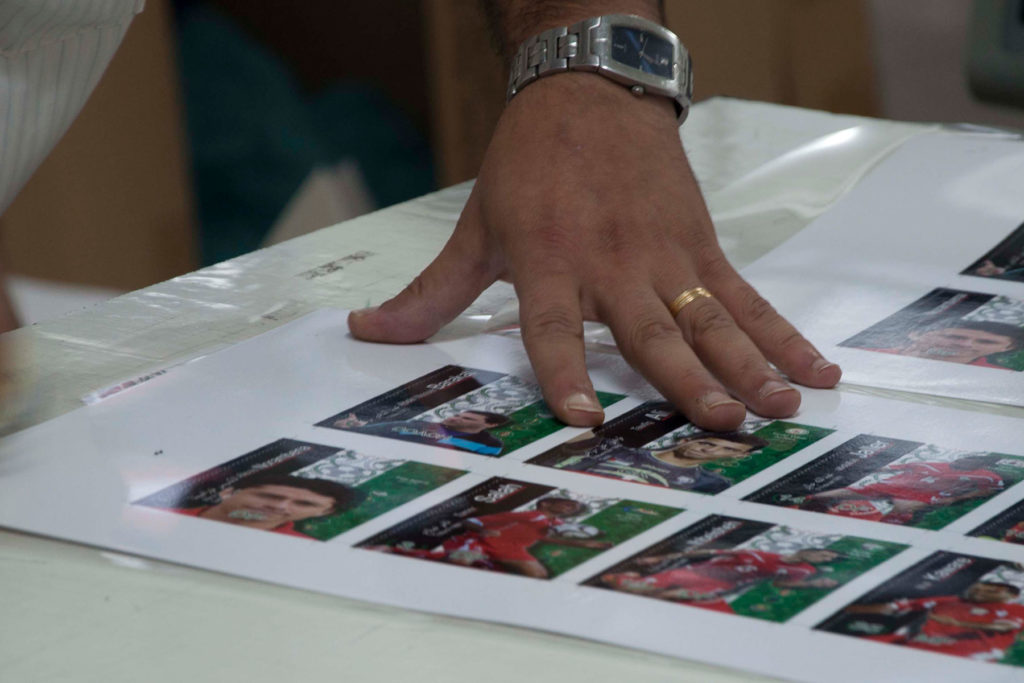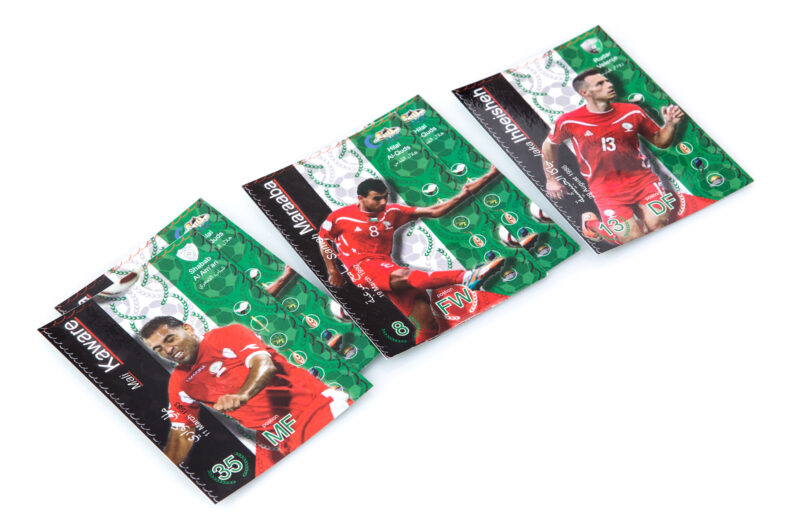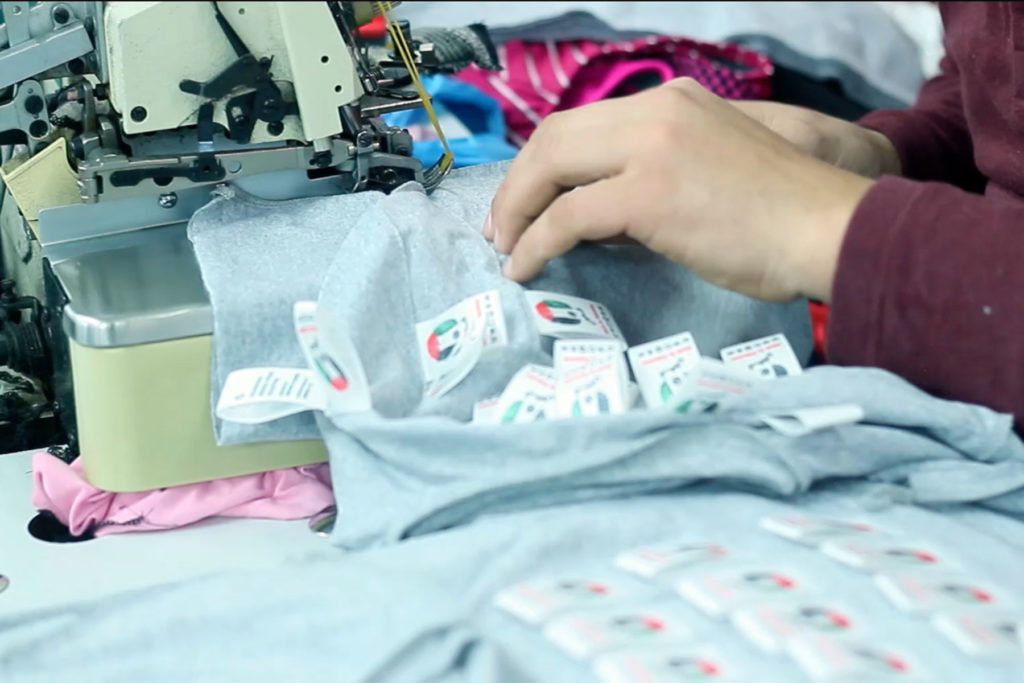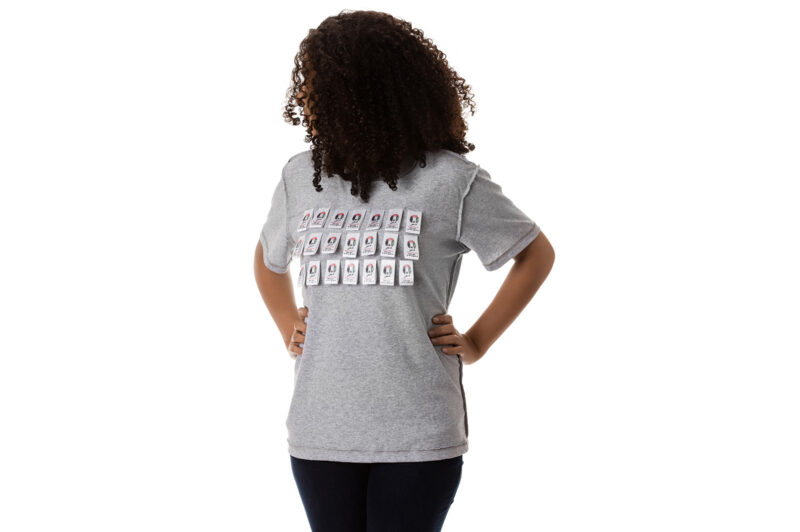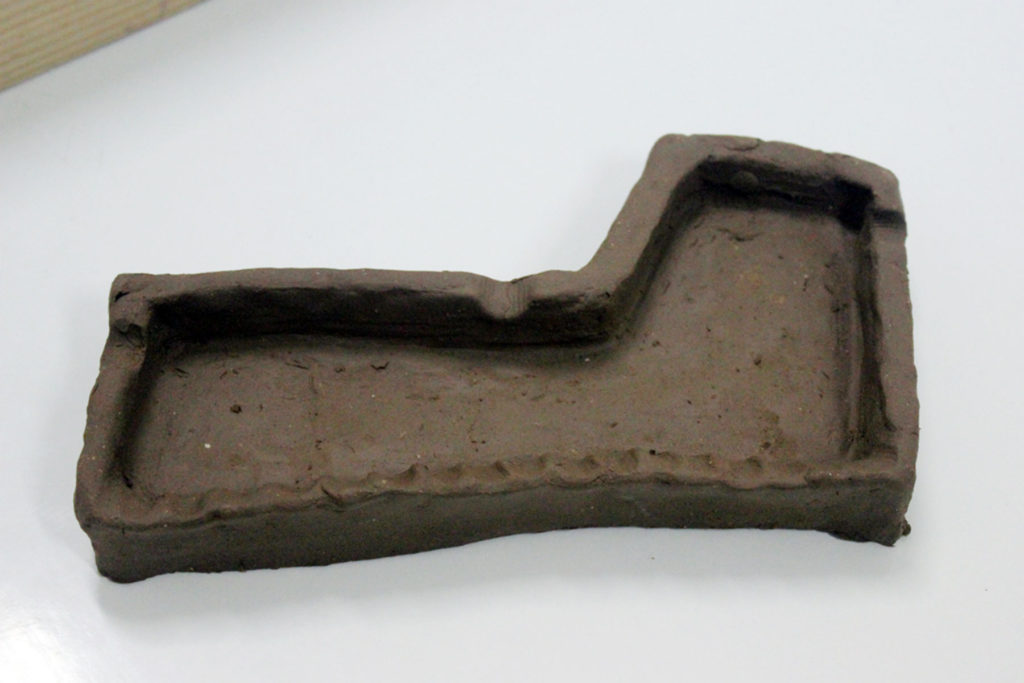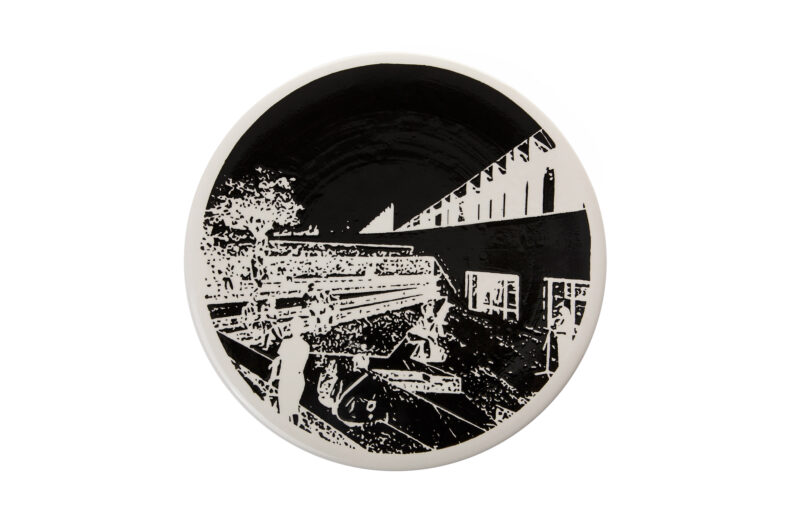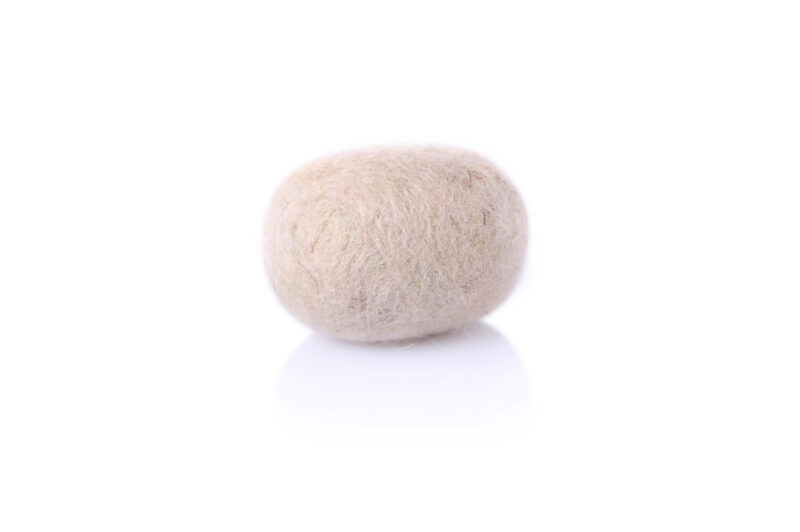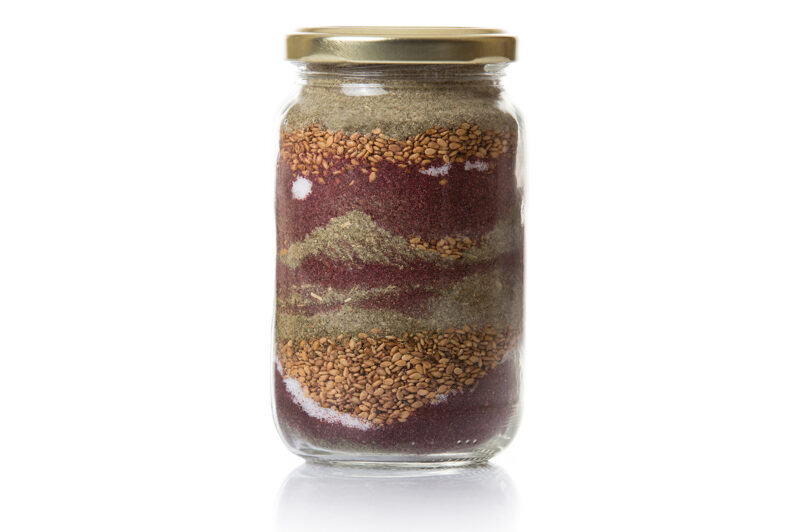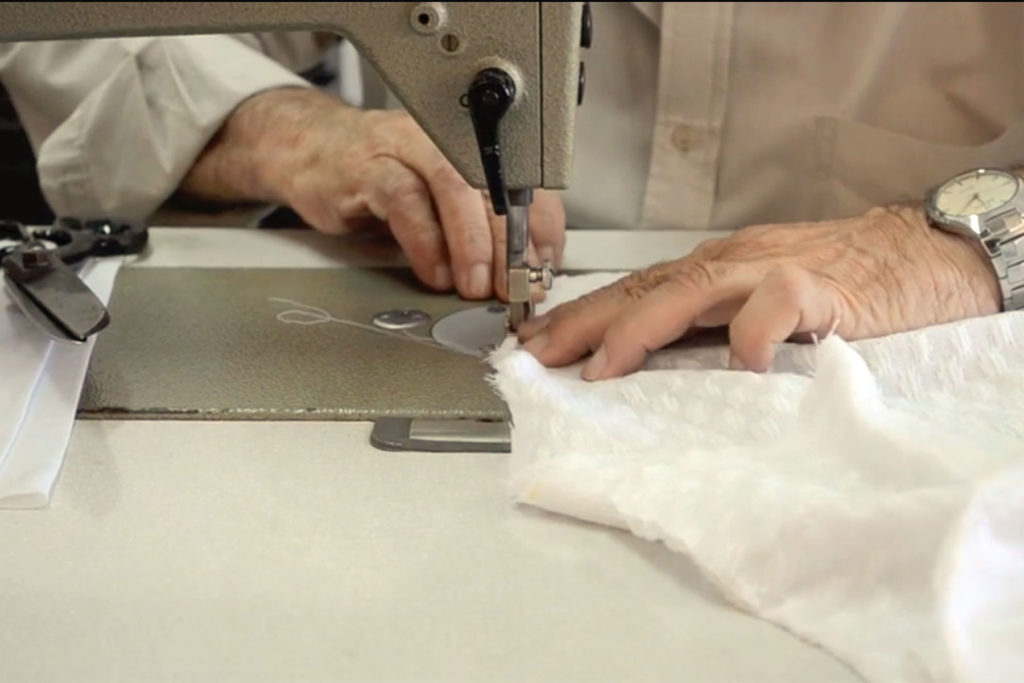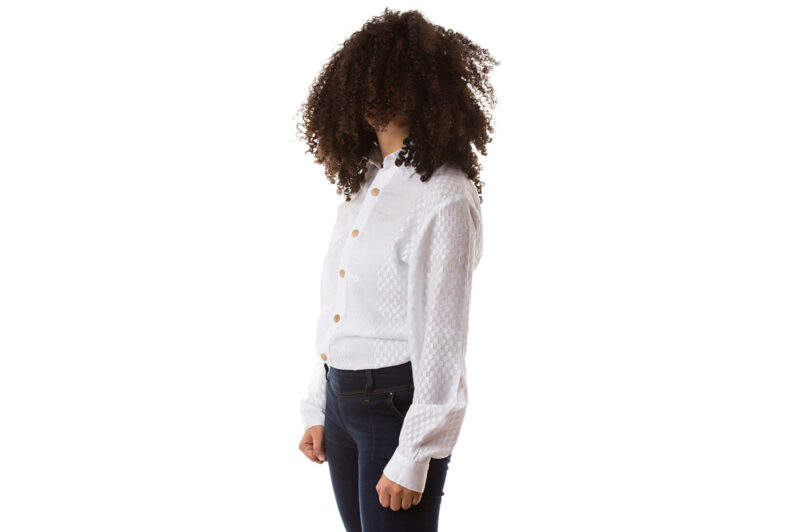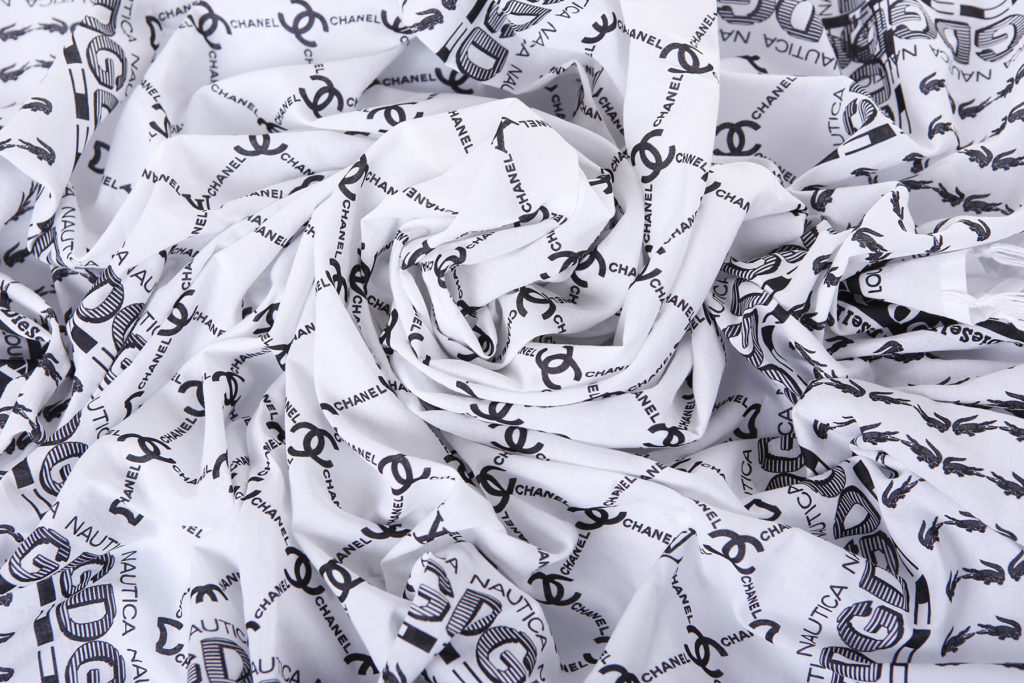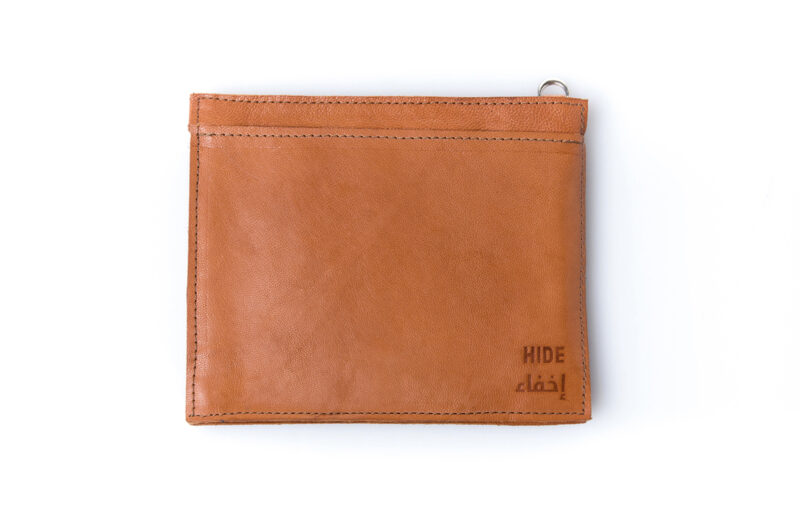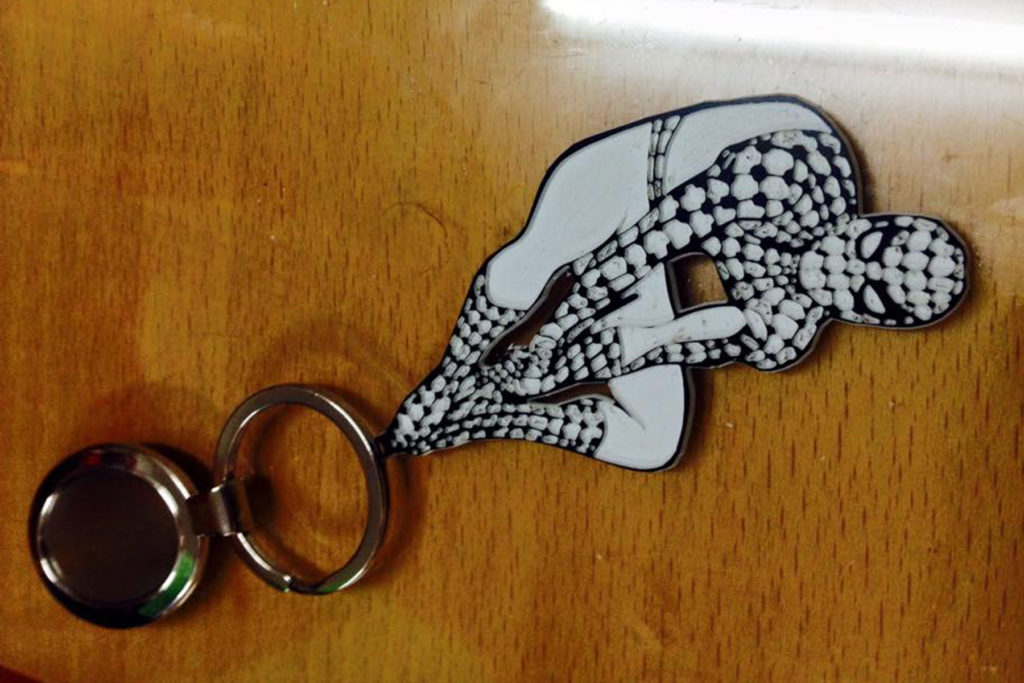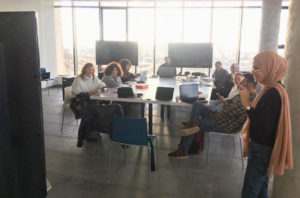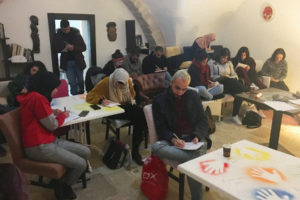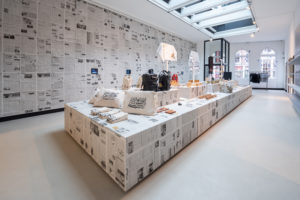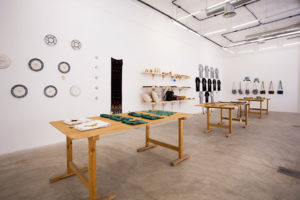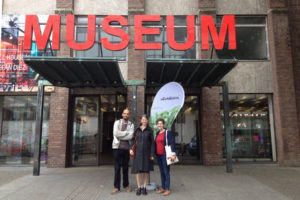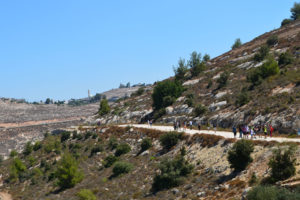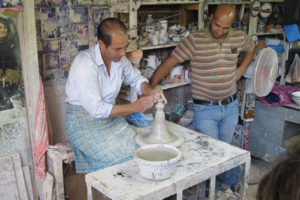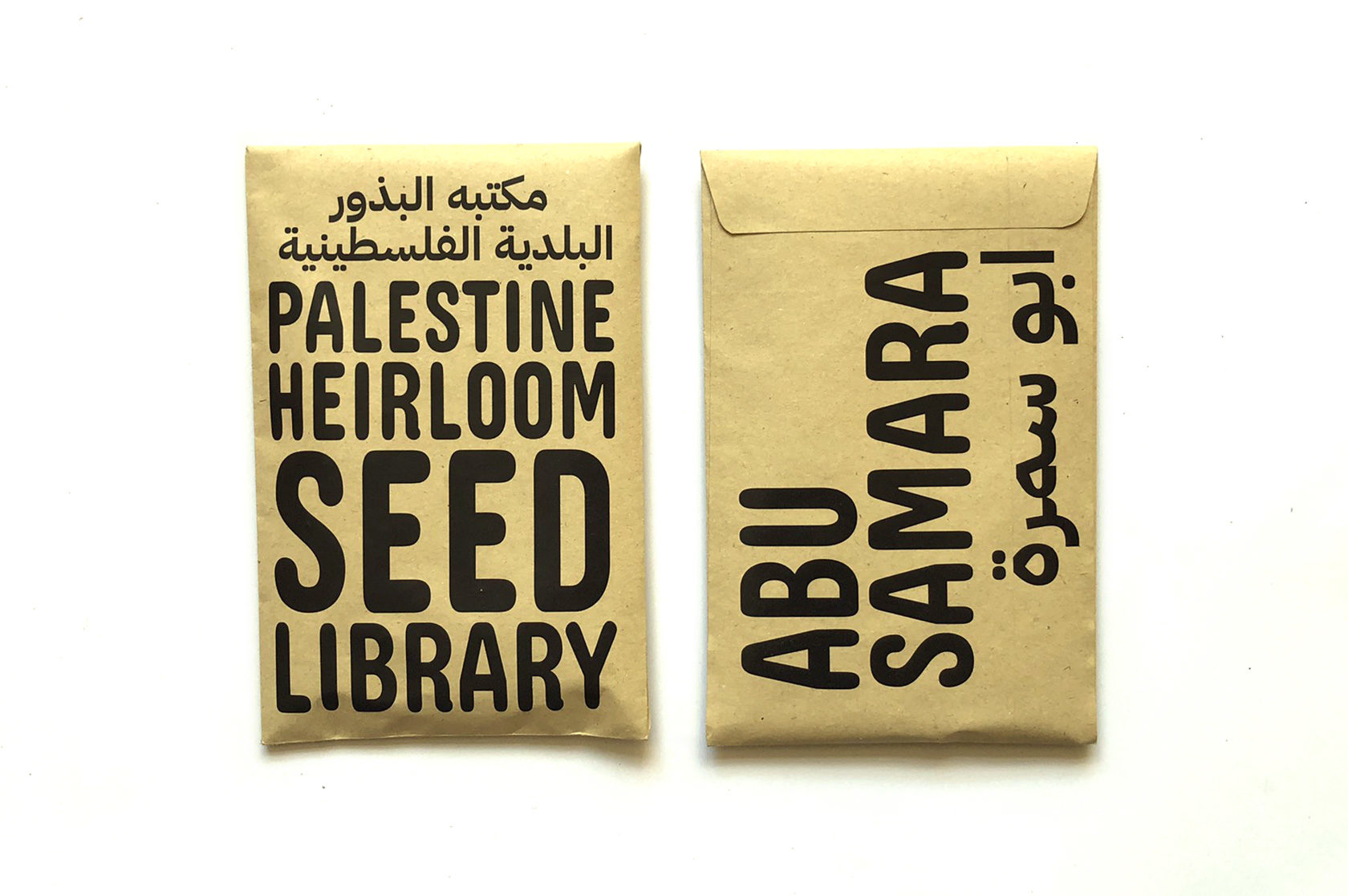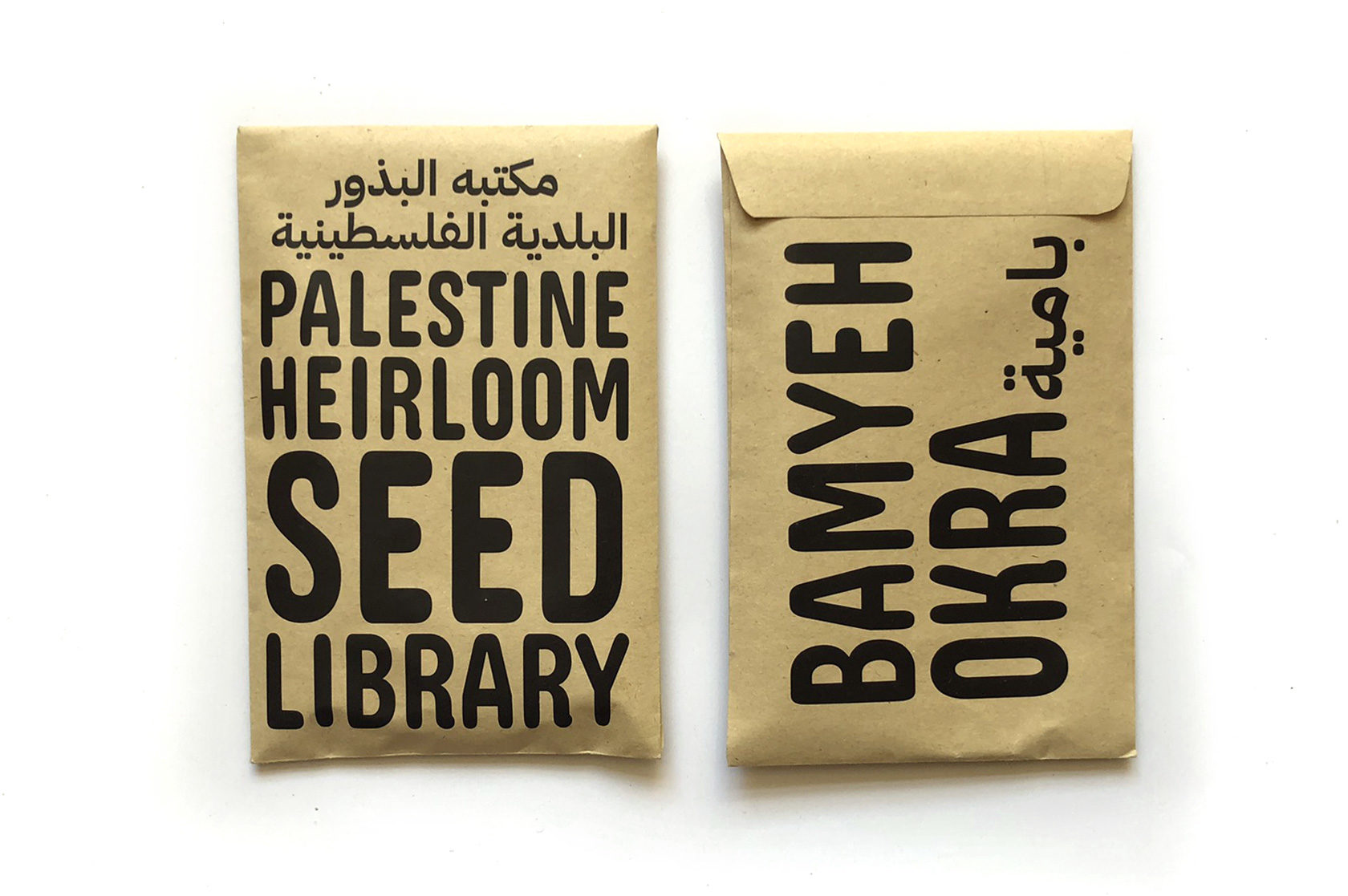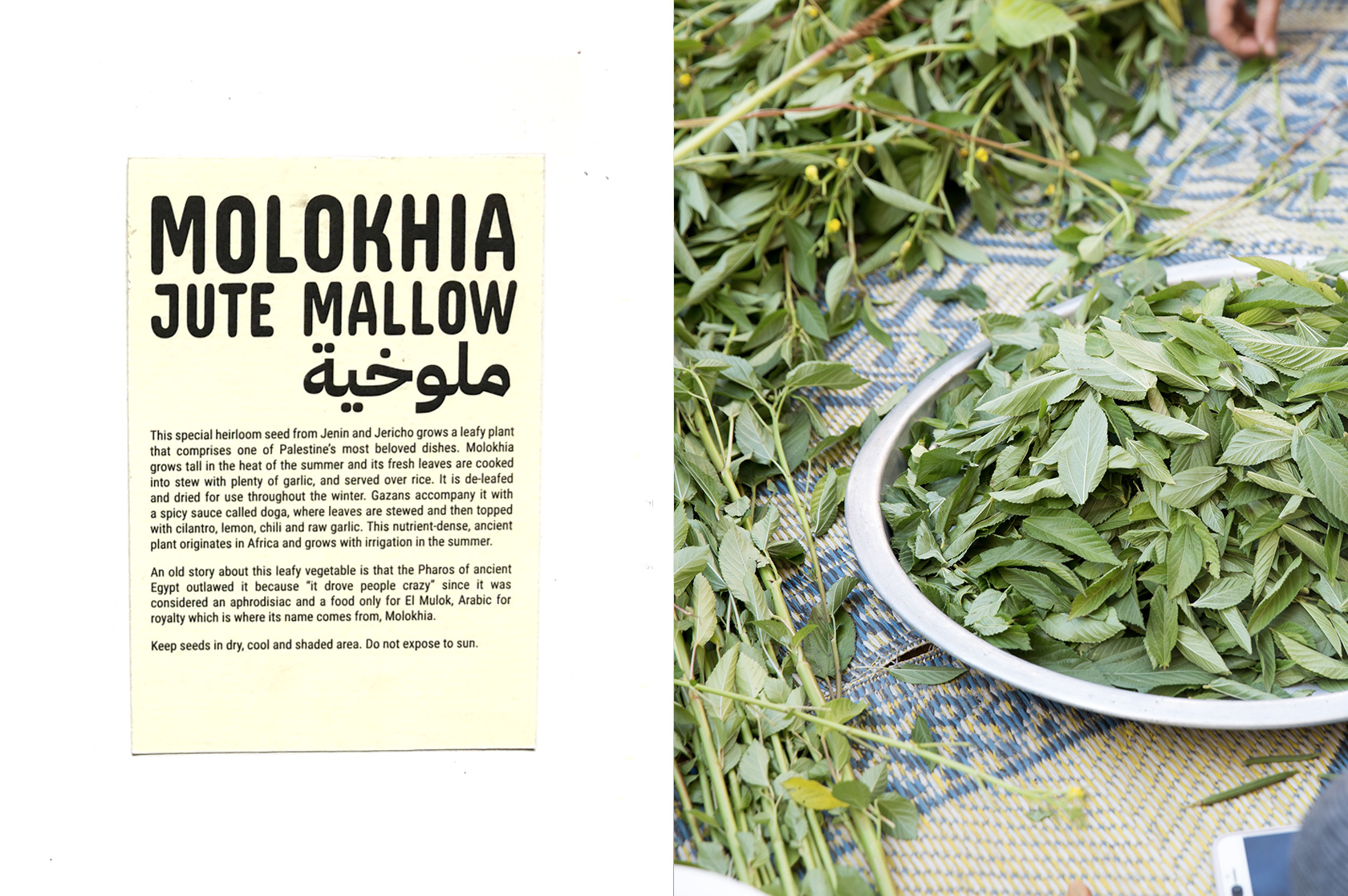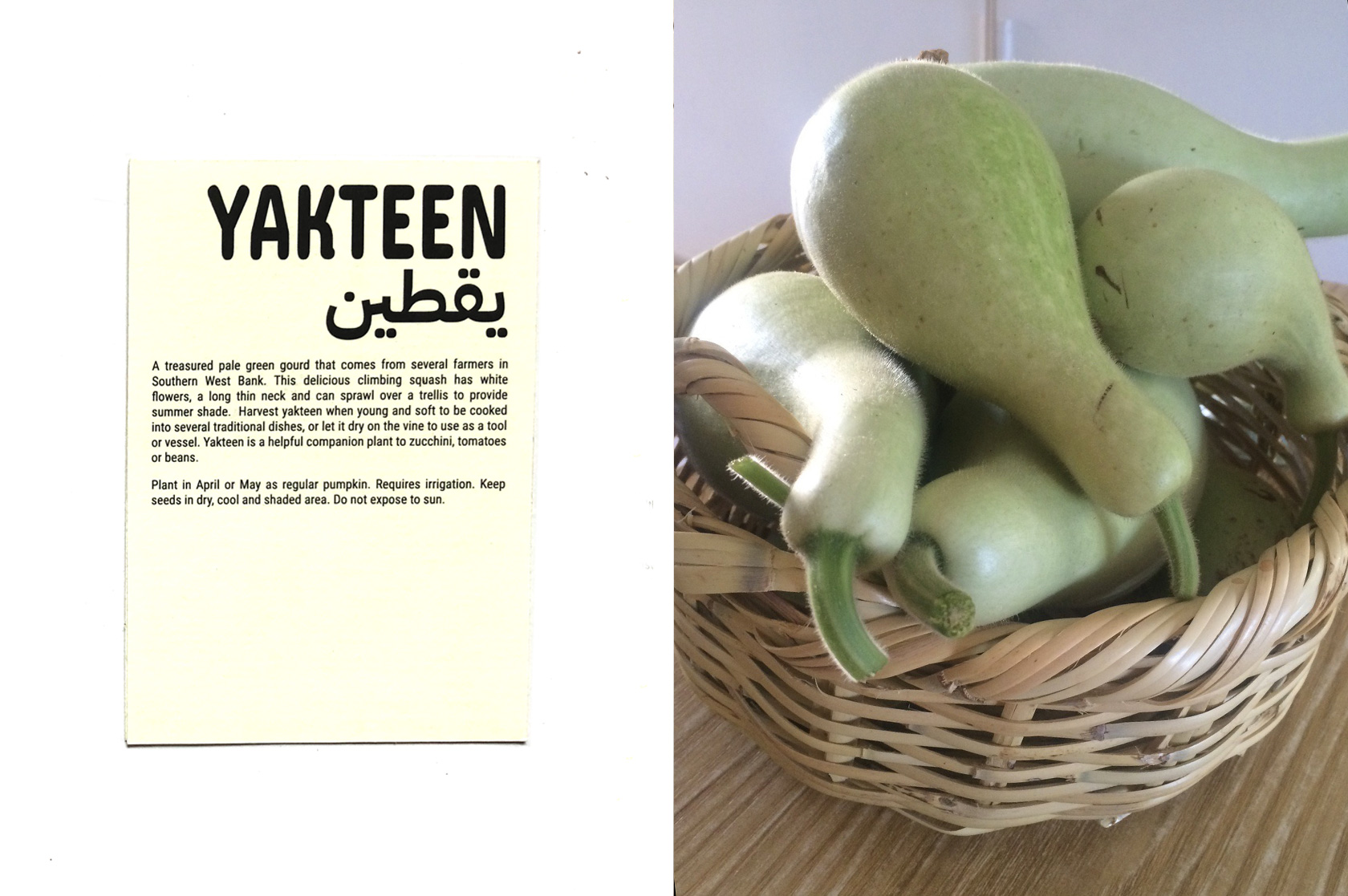Black on black keffiyeh
أسود على كوفية سوداء
Peasant farmers first wore traditional Palestinian scarves to protect them from the sun and dust. In the 1930s, the keffiyeh symbolised resistance when the farmers revolted against the British occupiers. Today, the keffiyeh holds deep symbolic meaning while serving practical uses such as a scarf, dress, tablecloth, etc. The one factory in Palestine that continues to make keffiyehs can be found in the heart of Hebron. The traditional Hirbawi textile factory has a dozen antique machines. The family has run it since they founded the factory in 1961. Today, they struggle to compete with cheap imported keffiyehs from China, though the quality of the original, authentic, handmade in Palestine keffiyehs is far superior. We selected these coloured keffiyehs from their broad collection of scarves.
- Further reading:
- The Palestinian keffiyeh: all you need to know about its origins [Middle East Eye]
- World Keffiyeh Day [Samidoun]
- Hirbawi Textile Factory (PS)
Yasser Hirbawi opened the Hirbawi Textile Factory in 1961 in Hebron, operating 15 machines and producing 150,000 keffiyehs annually by the early 1990s. Today, due to the signing of the 1993 Oslo Accords and the opening of trade with the outside world, only four machines remain in operation producing a mere 10,000 scarves a year. Not one of these scarves are exported, as overseas suppliers produce mass quantities at a fraction of the price, and the shrinking Palestinian economy and Israeli checkpoints and roadblocks create further hindrances to production and trade for small businesses like Mr. Hirbawi’s. In Mr. Hirbawi’s own words: “My machines are in good shape. They can start working tomorrow. I just need a market.” The Keffiyeh’s black and white pattern has come to symbolize the Palestinian struggle; the middle pattern, with its “wire mesh fence” design represents the Israeli occupation, while the oblong-shaped patterns on the side represent olive leaves- a symbol of Palestine and peace.
2017
90% cotton
130 x 130 cm
€34,50





